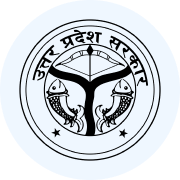Data Sufficiency For GMAT | Logical Knowledge for Super TET PDF Download
DATA SUFFICIENCY
Approximately 40% of the Quantitative Section
WHY learn DATA SUFFICIENCY:
1. Approximately 15 DS questions on Test Day
2. Differences in the DS types (Value vs. Yes/No) require slight variations in how you do the work
3. DS questions are often based on math and logic patterns. Knowing those patterns (and learning how to deduce them) will make the Quant section easier
4. It meshes easily with your TEST IT knowledge (in DS questions, you have to test more than 1 possibility though)
The 5 DS answer choices:
1. Fact 1 is Sufficient, Fact 2 is Not
2. Fact 2 is Sufficient, Fact 1 is Not
3. Both Facts NOT, Together Sufficient
4. Both Facts Sufficient
5. Both Facts NOT, Together NOT
The EMPOWER Method for DS:
1. What is the question asking for?
2. What information were you given in the prompt?
3. Use the new information in Fact 1 to answer the question (prove if the answers change or stay the same, either with TEST IT or math)
4. Eliminate answers
5. Use the new information in Fact 2 to answer the question (prove if the answers change or stay the same, either with TEST IT or math)
6. Combine Facts, ONLY IF they’re BOTH insufficient
PROBLEM SOLVING
Approximately 60% of the Quantitative Section
Problem Solving Tactics
1. Test It of Test The Answers: up to 2/3 or all PS questions
2. Do the math: roughly 1/3 of PS questions
3. Triage:
1. Question is too hard
2. You’re stuck, or the question could likely take too long
3. You’re out of time
|
51 videos|41 docs|51 tests
|
FAQs on Data Sufficiency For GMAT - Logical Knowledge for Super TET
| 1. What is the format of the GMAT exam? |  |
| 2. How long does the GMAT exam take to complete? |  |
| 3. Can I use a calculator during the GMAT exam? |  |
| 4. How is the GMAT exam scored? |  |
| 5. Can I retake the GMAT exam if I am not satisfied with my score? |  |
















